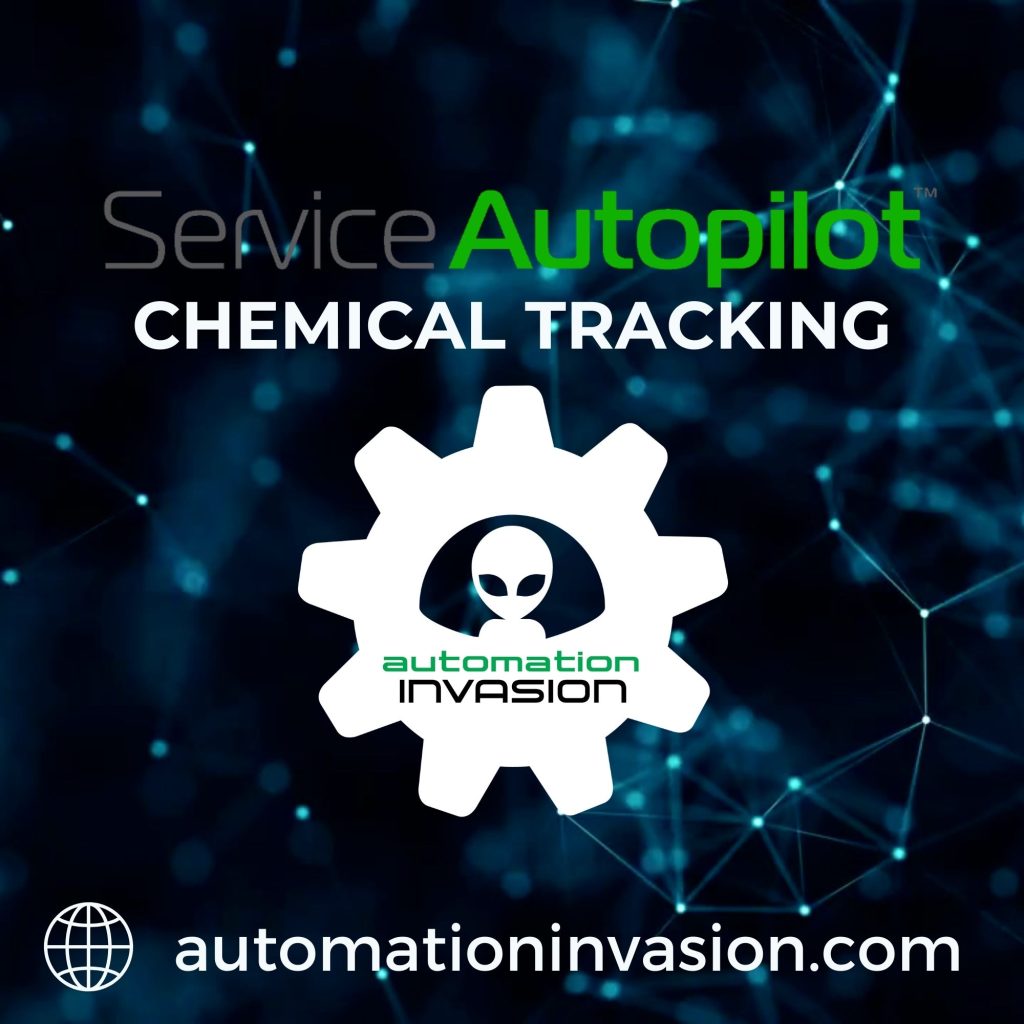A High-Level Overview of Chemical Tracking in Service Autopilot
Join us during the Month of May 2025 for our Free Office Hours Sessions, every Wednesday and Friday at 11AM EST. Space is limited…
For lawn and tree care businesses that apply herbicides, fertilizers, or pest control treatments, staying compliant with EPA regulations while maintaining accurate application records is more than a best practice—it’s a necessity. Chemical Tracking in Service Autopilot provides an integrated solution to manage this aspect of your business with precision. From configuring chemical products to tracking usage in the field and producing detailed reports, Service Autopilot makes what is typically a regulatory headache into a streamlined process.
Whether you’re applying pre-emergents, insecticides, or granular fertilizers, tracking chemical usage isn’t just about compliance—it’s also about knowing your costs, improving job profitability, and empowering your teams to document applications in the field without breaking stride. Let’s walk through how chemical tracking works in Service Autopilot and how to get started with it efficiently.
Setting Up Products for Chemical Tracking
The foundation of chemical tracking begins in the “Products” section within Service Autopilot. This is where you’ll create non-inventory products for each chemical you use. Once created, you’ll enable the “Track Chemicals” option which activates additional fields for EPA registration number, application rate, target species, mix ratios, and unit costs.
Each product can be tailored to reflect its actual use—whether it’s a liquid concentrate mixed with water or a granular product applied directly. These configurations are essential not only for accurate field logs but also for generating usage reports and job costing analytics. If you’re applying based on square footage, make sure to configure the correct custom field (e.g. “Turf Square Feet”) to ensure that application rates and planned usage calculations are accurate.
Linking Chemical Products to Services
After your products are set, it’s time to link them to the services your teams perform in the field. Within the “Services” settings, you’ll define which chemical products are associated with each service (like “Broadleaf Weed Control” or “Fertilization – Spring”). This is critical for the products to appear in the Chemical Tracking Wizard when jobs are scheduled.
You can assign start and end dates to products linked to services, which allows for seasonal changes in chemical usage—so the right products show up at the right time. This flexible linking system ensures your technicians only see the chemicals that are applicable to the job they’re performing.
Scheduling and Dispatching Chemical Jobs
When a job containing a chemical-tracked service is scheduled, it becomes visible in the Chemical Tracking Wizard, located within the Dispatch Board under “More.” This tool allows office staff or field managers to pre-fill weather conditions, solution amounts, and applicator license information.
Technicians in the field can then use the mobile app to finalize application details such as wind speed, direction, and temperature—ensuring that the chemical application complies with state and federal requirements. Custom instructions can also be configured and sent automatically to the client post-service using SA’s automation tools or email templates.
Reporting for Compliance and Job Costing
The Chemical Tracking Report, located in the SA Report Center, gives you everything you need for EPA or state-level audits. It includes fields like the chemical name, EPA number, applicator name, treated area, wind speed and direction, temperature, and total solution applied.
When properly configured, this report becomes a critical tool for your business—proving your compliance, validating team performance, and helping you make decisions on chemical purchasing and job pricing.
Importing Targets, Units, and Methods
To streamline product configuration, Service Autopilot allows you to import a range of supporting data such as targets (e.g. weeds, grubs), units of measurement (ounces, gallons), and application methods (spray, granular, injection). Using SA’s downloadable Excel template, you can prep this data offline and upload it into your system for immediate use.
This import process helps standardize your tracking fields and ensures consistency across all services and products. It also saves hours of manual entry and ensures your entire chemical tracking system is built with clarity from the start.
Make Chemical Tracking Work for You
Chemical Tracking in Service Autopilot isn’t just a compliance tool—it’s a strategic system for growth-minded lawn and tree care businesses. By automating chemical usage reporting, linking products to services, and enabling techs to log real-time data in the field, SA puts you in full control of a typically manual and error-prone process.
If you’re looking to set up chemical tracking or want to audit your current configuration for efficiency, Automation Invasion can help. From product import support to full automation of post-service communication, our team is ready to streamline your workflow.
Need help setting up Chemical Tracking in Service Autopilot?
Whether you’re starting from scratch or fine-tuning your existing setup, our team is here to help you stay compliant and efficient.
Contact us today at admin@automationinvasion.com or visit automationinvasion.com to get started.


